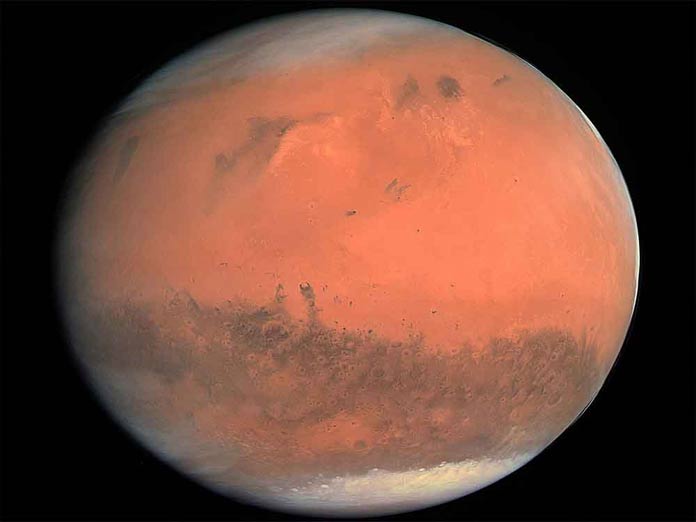Live
- India must move ahead on path of unity, Constitution: Rahul Gandhi on Sambhal violence
- Rashmika Mandanna Drops Major Hint About Her Wedding Plans with Vijay Deverakonda
- Double murder accused arrested
- Austria's Freedom Party wins 1st state election in Styria
- GMC related services through call centre from today
- JPC on Waqf Bill seeks extension for comprehensive consultations
- PM to take part in a host of programmes in Vizag on Nov 29
- Bigg Boss Telugu 8 - 13th Week Nominations: Intense Fights and Key Contestants Nominated
- Maharashtra Congress chief Patole 'quits', party denies
- Lokesh lambasts Jagan for imposing a burden of Rs 6,500 cr on State govt
Just In

Scientists say they have found the first geological evidence of a system of ancient interconnected lakes that once lay deep beneath the surface of Mars, five of which may contain minerals essential for life
Geneva: Scientists say they have found the first geological evidence of a system of ancient interconnected lakes that once lay deep beneath the surface of Mars, five of which may contain minerals essential for life.
According to researchers from Utrecht University in the Netherlands, Mars appears to be an arid world, but its surface shows compelling signs that large amounts of water once existed across the planet. Last year European Space Agency's Mars Express mission detected a pool of liquid water beneath the planet's south pole. A new study, published in the Journal of Geophysical Research: Planets, reveals the extent of underground water on ancient Mars that was previously only predicted by models.
"Early Mars was a watery world, but as the planet's climate changed this water retreated below the surface to form pools and 'groundwater'," said Francesco Salese from Utrecht University. "We traced this water in our study, as its scale and role is a matter of debate, and we found the first geological evidence of a planet-wide groundwater system on Mars," Salese said in a statement. The researchers explored 24 deep, enclosed craters in the northern hemisphere of Mars, with floors lying about 4000 metres below martian 'sea level' -- a level that, given the planet's lack of seas, is arbitrarily defined on Mars based on elevation and atmospheric pressure.
They found features on the floors of these craters that could only have formed in the presence of water. Many craters contain multiple features, all at depths of 4000 to 4500 metres -- indicating that these craters once contained pools and flows of water that changed and receded over time. Features include channels etched into crater walls, valleys carved out by sapping groundwater, dark, curved deltas thought to have formed as water levels rose and fell, ridged terraces within crater walls formed by standing water, and fan-shaped deposits of sediment associated with flowing water. The water level aligns with the proposed shorelines of a supposed martian ocean thought to have existed on Mars between three and four billion years ago.
"We think that this ocean may have connected to a system of underground lakes that spread across the entire planet," said Gian Gabriele Ori, director of the Universita D'Annunzio's International Research School of Planetary Sciences, Italy. "These lakes would have existed around 3.5 billion years ago, so may have been contemporaries of a martian ocean," Ori said. The history of water on Mars is a complex one, and is intricately linked to understanding whether or not life ever arose there, said researchers.
The team also spotted signs of minerals within five of the craters that are linked to the emergence of life on Earth: various clays, carbonates, and silicates. The finding adds weight to the idea that these basins on Mars may once have had the ingredients to host life, according to the researchers. They were the only basins deep enough to intersect with the water-saturated part of Mars' crust for long periods of time, with evidence perhaps still buried in the sediments today, they said.
Exploring sites like these may thus reveal the conditions suitable for past life, and are therefore highly relevant to astrobiological missions such as ExoMars -- a joint endeavour of ESA and Russian space agency Roscosmos. "Findings like this are hugely important; they help us to identify the regions of Mars that are the most promising for finding signs of past life," said Dmitri Titov, ESA's Mars Express project scientist.

© 2024 Hyderabad Media House Limited/The Hans India. All rights reserved. Powered by hocalwire.com







